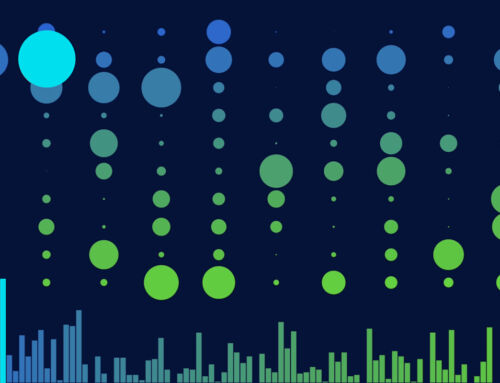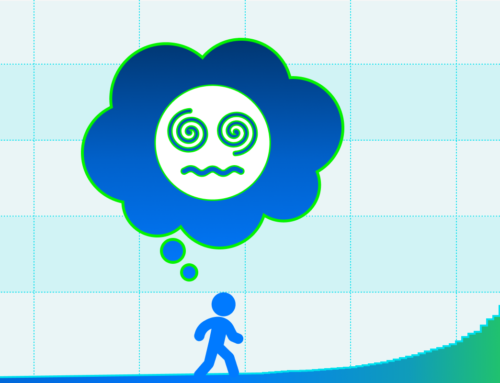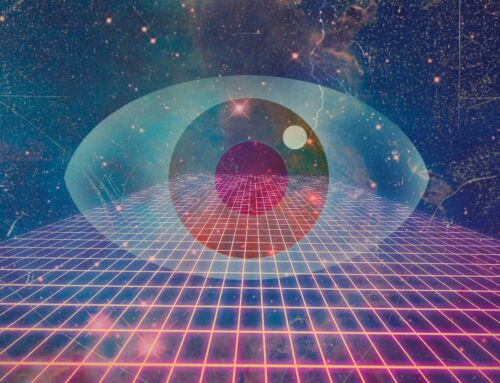A lot of interesting people have stopped by to scroll through the scale map of the solar system. If there was one reward from this unpaid “curiosity project” it was that I was reminded just how many kind and smart people are alive in the world today.
Many of them shared words of support, some shared inspiring thoughts and others had ideas for improvements. Just recently I managed to implement a few of those ideas, with help from even more kind and smart people. I got quite a nice head-start on the scripting thanks to Kyle Murray (Krilnon at kirupa.com) who I’ve never met, and am beginning to suspect is some kind of benevolent super-being.
Here are the new digital accoutrements you can enjoy on your next journey through scaled-down space:
Fancy language translator.
I definitely couldn’t have done this part on my own, mostly because I only speak English (and Google translate would make my writing appear as though it were written by, well… a computer. A computer with brain damage.) For those unfortunates whose first language is not the official tongue of the global monoculture, you can now find a little icon in the upper right that lets you convert the text on the map to whichever archaic language is spoken on the streets of your charming village.
This feature was made possible by the translation work of friends, family, and kind, foreign pen-pals. I will name them here, so when people Google their names, they will be directed to this page: Niaz Uddin, Naomi Kasahara, Shirley Worth (my Aunt), Thorsten Frey, H-D Honscheid, Marcel Schäfer, José Roberto V. Costa, Fransje Pansters at the Teylers Museum, Lorenzo Matellán, Claudia Rodriguez-Ortega, David Chatenay, Pierre Houzé, and Khrys from France.
Light Speed!
Another new, much-requested feature is the light-speed button in the lower right, which, when pressed, will demonstrate just how ridiculously slow the universe moves, relativitively speaking. (Note the hilarious wordplay.) Even though I was aware that light takes 8.5 minutes to get from the sun to the earth, I was alarmed at how impatient I felt when I first saw the tick marks inching along. I never thought I would say I felt like the speed of light was too slow. It makes our hopes of getting to a distant planet seem pretty bleak, unless we can outsmart physics.
Unit Selection
Now the vast distances between the sun and planets can be measured using the scale of your choosing. I even figured out how to insert comma delimiters, in case that somehow helps you to better grasp ridiculously large numbers.
Scrolling Shortcuts
And finally, for the truly lazy, I added some hidden shortcuts to help you traverse the expanses in a less tiresome manner. You’ve got a couple secret buttons that auto-scroll from one point of interest to the next, and there’s a script that, if working properly, will convert the vertical movement of your scroll-wheel to horizontal scrolling. While these features almost entirely defeat the purpose of the project by eliminating the need to actively scroll through the endless void, they will hopefully allow people to resume their productive activities in a more timely manner.
Thanks again to everyone who supported this project through their Likes, Retweets and words encouragement! And thanks to my Dad, Al Worth for the debugging help!












Hi Josh.
So, I’m sure you know about it by now, but there is a new Buzzfeed article featuring 35 different websites that are “surprisingly useful” and your “If the Moon Were Only 1 Pixel” site was on there. Me and my mom just looked at the whole thing. It is incredible! Space fascinates me and I had a lot of fun looking at what you created. It must have taken a very long time and I applaud you and thank you for making it. It’s awesome!
P.S. Your commentary was great also. It gave us some laughs!
I totally didn’t even notice the shortcuts. I scrolled through the entire map with my finger on my Android phone. It was very humbling to “experience” the vastness of the solar system. I couldnt imagine doing that for the entire galaxy. This was an awesone idea and i hope it sticks around. I’d love to show my kids when they get a little older.
Amazing and beautiful. Thank you for taking the time to make this.
Here’s a modest request if other people find it worthwhile: the ability to scroll though the map with the distance in a logarithmic scale. How much “smaller” would the map be? There’s one of those mathematical abstractions that help us.
Hello Josh! I am a journalist, translator and scriptwriter for a little pop-science web video show from Russia. I would be honored if you let me translate the Solar system map (along with its indispensable, witty commentary) into Russian. While I was scrolling along and reading it, I already felt sad that I couldn’t share it with a lot of my friends and part of my audience who don’t speak English. That’s why I was immediately relieved to see that you incorporated a language selector in it.
I often try to explain to people how the existing maps are far from reality, using all these “basketball and cumin seed” analogies and all that, but I was astounded all the same. I was especially astonished at how SLOW the lightspeed actually is. On the other hand, I felt that the whole Solar system is not so small after all, it seems that it’s at least on the scale of the closest stellar neighbours! (Have to check that.) Maybe if we draw an outline around Neptune or Pluto, we would still see it on a neighbourhood map =)
Anyway: please, please let me add Russian to the list!
– with gratitude for your awesome project,
Ayur Sandanov
This is wonderful!
Have you thought about doing something similar for evolution and deep time?
I’ve thought about it, but not quite sure how it would play out as a timeline, since scrolling through space doesn’t necessarily give a sense of time passing. If you have any thoughts, feel free to pass them along.
Wow! I loved your map even before I checked those fancy buttons! I didn’t notice the lightspeed icon, so I’m really glad to find it now. Though solar system is huge, it seems that those words you wrote on the way transformed a boring travel into a very enlightening one. (Sorry if it looks like Google Translator made this comment, I translated it myself, Portuguese is my native language.)
… This should be called “Are We There Yet ?” I knew at a certain point that I HAD to finish… and I did. It made my day! Suggestion: create a sign-in for everyone who reaches the end.
Hi, Josh.
As many, many people on the Web, I like & appreciate your Idea about your Pixelspace website. It’s great. Especially comments.
I don’t know how up to date it is, but I would like to help you translate this idea in Ukrainian.
I’d be glad to help with this if needed. The level of wittiness is guaranteed. ;)
Anyway, Thank you for this space trip!
Hi Josh!
I am from Azerbaijan (http://en.wikipedia.org/wiki/Azerbaijan) and I would like to translate the map into Azerbaijani. I would also translate it to Russian, but Ayur Sandanov already requested that :)
Please e-mail me if it is possible.
Thanks!
Hey, I am a fairly new UXD student and am working with my classmates on something similar for the evolution of technology over time. I was wondering if you would be okay if we take the skeleton of the code and modify those tags and attributes, so that we can learn and prototype quickly. It is a strictly educational / ‘curiosity’ project. We would be glad to give your props.
No problem. Let me know when it’s ready to see.
Very interesting. Now I can’t stop thinking about how this would make an awesome screensaver (even though it wouldn’t really prevent screen burn in).
An awesome, interactive way of answering the question that occurred to me: how far apart ARE the planets in our solar system? The light speed feature was really cool. Wonderful work, and I’m glad you’ve gotten a lot of support for translation and such.
Beyond awesome, fantastic work sir.
Hello Josh! I`am a student from China.I like your Idea about your Pixelspace website.It is great. I would like to show it to my classmate.
Hello Josh,
Super nice job for the solar system map. It is marvellous and exceptional.
I would like to contribute to your work by providing a Persian translation for the map.
Please let me know how that sounds to you.
Good Job,
Kian
Thank you for posting the most amazing map.
I think awesome is a very over-used word, but I would almost describe your scale map of the solar system as awesome because it has filled me with awe – and I only scrolled as far as Jupiter before realising that I was at work and needed to do a little of what I’m paid to do.
Hello! I just wanted to make a correction:
In Spanish, a billion is not actually “un billón” but “mil millones” or “un millardo” and a trillion would be “un billón” :)
This is because in Spanish, French, German… we use the long scale:
https://en.wikipedia.org/wiki/Long_and_short_scales
Hey Josh, great job on this. Isn’t it funny how the unpaid, side projects can be the most rewarding and resonate most strongly with others?
Hi Josh,
I’ve been fascinated with space most of my adult life, and projects like yours help show the wonder of it all. Thank you for making this, it’s great!
If you ever want it translated into Swedish, send me the phrases/words that you want translated and I’ll do it in a jiffy.
I was amazed at the sheer expanse of our own solar system when viewed this way. When you start to consider the distances beyond that to get to other stars and then on to galaxies it is mind boggling.
One thing I would have liked to have seen is how far out all the man made space probes are now.
Amazing work, thank you.
Hey Josh,
I have an idea.
In the ‘units’ pop-up menu,
could there be a checkbox saying ‘Relative to Earth’?
Currently, all of the distances shown are how far away the area is from the sun, but
could you do it so that people could see the distances from the earth instead?
All you would have to do (when the checkbox is selected) would be to subtract:
153,342,924 kilometres;
95,282,846 miles;
1 Astronomical Unit;
8.5 light minutes;
12,041.1 Earths;
44,130 pixels;
12,169,294,448.6 buses;
5,111,425,688.6 blue whales; or
17,323.4 Great Walls of China
from the listed distances.
I think that this would give users a better idea as to how far away planets, moons, etc are.
Thanks!
P.S. I love your site: not just “If the Moon was 1 Pixel” but the entire blog. Congrats, and keep up the good work.
Hi Josh,
I’m glad to see my contribution on the french translation online :)
best regards
Hi Josh,
I just wanted to say that that map was way awesome and amazing and the comments you left on it were pretty inspiring. So all in all, your map is one of the best I’ve ever seen describing how small and yet significant we are and educating as well with all the different measurement scales.
Thank you and keep up the good work.
Are you saying that after Pluto we would need 6,000+ screens like this 13″)? I assume that is to the Alpha Centauri system.
No, I think the 6000 more screens is to the Ooort cloud, where the comets from (the far outer edges of the Solar System). It’s around 1/4 million screens until you get to the next star.
The verbiage used is maps, not screen. The closest star is currently 4.24 light years away and you end at the map at 328.6 light minutes… so if I can math at all, probably more like 41,313.31 more entire maps of this size until you see the closest star? (which would take 4.24 years to watch at light speed.) Not sure what is at 6,000 MAP lengths.
I think you mathed wrong.
Math is hard! You were totally right, 4.24 Light Years only equates to about 268,000+ Astronomical Units, quite conservatively, 6000+ maps!
This is an amazing visualization for scale, and a profound teaching aid! Excellent work.
I didn’t notice the light speed feature at the bottom, that’s neat. It would be really cool if, after reaching Pluto it said how fast you would have had to have been traveling to have reached Pluto in the time it took you to scroll. I was probably traveling at an average of 10-20x the speed of light, although I’m counting the times I stopped to read as part of that. If we only count the times I was moving, I was probably moving at around 50x the speed of light going through that chart. It would be cool to know that max speed moving if you can determine scroll velocity or even just average speed from beginning to end. Thanks for making this awesome site!